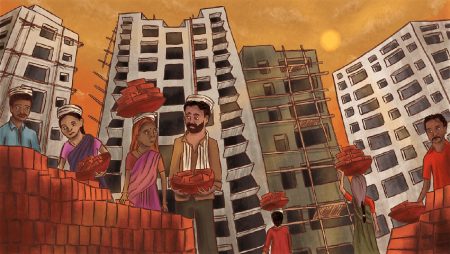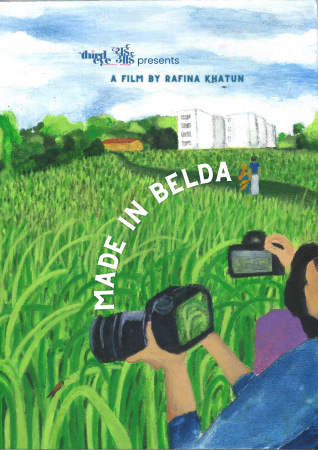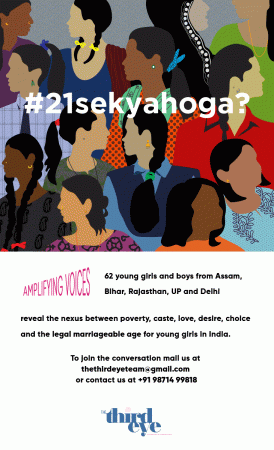We know very little about the life of the ordinary woman prisoner. She is either non-existent in popular imagination or made out to be an extraordinary deviant, transgressing all codes of social morality. But what constitutes the ordinary woman prisoner’s ‘criminality’? What lies at the heart of it? What are her dreams, desires and fears? What does a post-prison life look for her?
Mahuya Bandhopadhyay and Rimple Mehta, editors of Women, Incarcerated: Narratives from India, talk to The Third Eye about the making of this book. They speak about the importance of curating the anthology with diverse perspectives, looking at the prison as a deeply political space as well as a continuum of society, the problem with the exceptionalisation of the category of the political prisoner, and the need to imagine a different order from bordered orders.
Mahuya Bandyopadhyay has conducted fundamental research on the prison system in India, focusing on the everyday lives of prisoners. Her work is situated at the intersections of the sociology of organisations, sociology of law, crime and punishment and gender and masculinities. She has several years of teaching experience at the undergraduate and postgraduate levels at University of Delhi and Tata Institute of Social Sciences, Mumbai.
Rimple Mehta is a Senior Lecturer at the School of Social Sciences, Western Sydney University. She has previously worked at the School of Social Work, Tata Institute for Social Sciences, Mumbai and School of Women’s Studies, Jadavpur University, Kolkata. Her research and field engagements broadly focus on women in prison, refugee women, and human trafficking. She engages with questions of borders, citizenship and criminology of mobility.
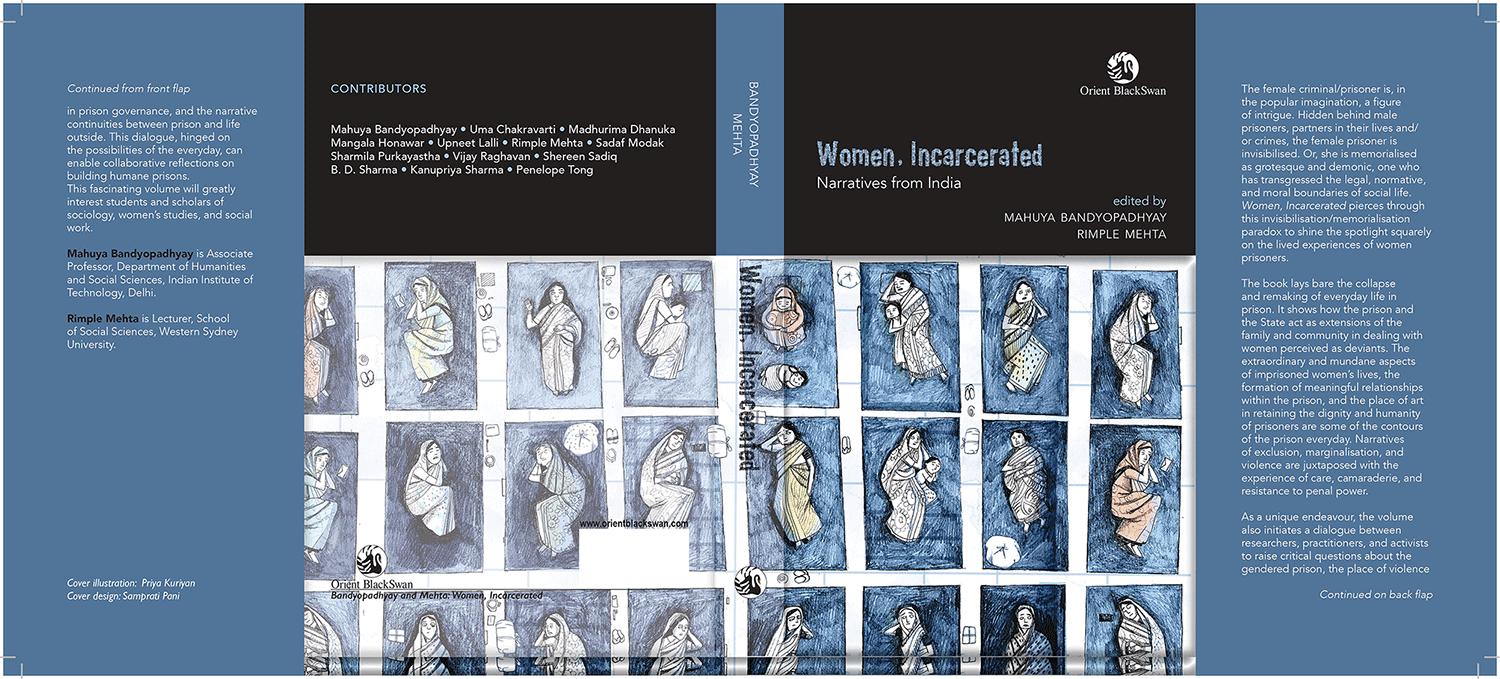
TTE: To edit and curate an anthology about women in prisons in India must involve diverse entry points—not just into the prison, but also women’s lives. What were some of the entry points into Women, Incarcerated and what led to this diverse authorship of essays?
Mahuya Bandhopadhyay: Firstly, one of the reasons there is such little scholarship on prisons in India is because of difficulties of access. So, we wanted our work to move beyond just the domain of academia to include practitioners: people from other disciplines who would have access to the prison and who can tell us more about the prison. So, I think the first impetus around the curation came from there. Secondly, Rimple and I were both thinking about questions of interdisciplinary knowledge…
Rimple Mehta: I have training in sociology, social work and women’s studies and Mahuya was coming from sociology—anthropology. So, we brought these perspectives together. We also had concerns—is it okay to bring someone who has essentially been a part of the system on board? What is the politics of this? But we agreed that people from within the system must write because it is important to bring out as many perspectives.
When we started off in 2017, it was like this two-person island; in terms of prison literature, we had to think a lot about the politics of generating knowledge in a space where there is very little from marginal standpoints. There was social work engagement that was going on in prisons, particularly through Prayas, a field action project in TISS (Tata Institute of Social Sciences), but in terms of existing literature, there was very, very little that we had, so that’s why we took this decision of curating and editing this anthology.
So when you set out to put together this anthology, what were your central pillars of enquiry?
RM: One of the things that Mahuya and I have really held on to and continue to hold on to in the work that we do in different spaces is that of highlighting the stories of the ‘ordinary’ woman prisoner. This was very important for us because, again, we felt there was so much discussion in popular media around political prisoners. Political prisoners often garnered that kind of empathy from a certain group of people in the country, but it was the ‘ordinary’ woman prisoner who continued to completely disappear in all of these discussions. The other central pillar of our enquiry was the continuum—the continuities between our lives outside and inside prison as women. And I think that sort of forms the core of the book.
MB: Yes, our work tries to not look at the prison as a special kind of organisation.
In my other work, I have in fact argued that if you look at the violence on the street, you’ll see that the state no longer needs the prison for its agendas of control.
Rimple and I actually did doctoral field work in the same prison in Kolkata, about 10 to 15 years apart. In that work, a lot of the narratives from the young male prisoners would sort of invert the idea of the prison onto the neighbourhood that they came from. Which means that conceptually, there are aspects of the prison that they find more liberating than the neighbourhood.
Do you mean like the Residents Welfare Associations in New Delhi?
MB: Yeah (laughs). And, this insight was very significant for the lives of women. Because, if you read the narratives in Women, Incarcerated, that is a theme that runs through all of them. That there is a kind of seamlessness in the experience of violence, isolation, and marginalisation across institutions.
This seamlessness of experience for women—within and outside prisons—also stems from the fact that the prison system can only be what the social system is. The prison mirrors the society it stems from. Could you speak more about this continuum?
MB: I’ll just take the example, which is in the essay that I had written. It is drawn from a book written by a Bengali political prisoner in the ’70s, Minakshi Sen, and she writes about this young Bangladeshi woman, Champarani, who moves from her village, crosses the border, and is taken to a brothel. The family friend who was supposed to deliver her to her aunt’s place actually takes her to a brothel. And so Champarani moves from this small village in Bangladesh to this brothel and she doesn’t know what’s happening. She attempts suicide. And she moves to the hospital and from the hospital to the prison. And so this is Champarani’s story; but if you look at the way in which the author narrates that story, it is very clear that this woman who didn’t know anything other than her village, in a span of a few months, actually sees these different institutional spaces. And for her, there is no difference between these institutions—brothel, hospital, prison. So, when she’s about to be released from prison, she feels this anxiety. And she tells the author that, “Look, it’s their people,” implying that the people of the brothel have representatives in the prison and the wardens are complicit with the brothel. And if she’s released, she will have to go back to the brothel. So, you know, this ordinary prisoner, who earlier had not moved beyond the boundaries of her village, is able to see these continuities.
The embodied experience of incarceration is important for the realisation to happen that this is the way in which [structures are] seamless. I don’t think that if we had not done work in prison, we would have actually seen that connection. But it’s almost visceral. It’s almost like something that you can sense.
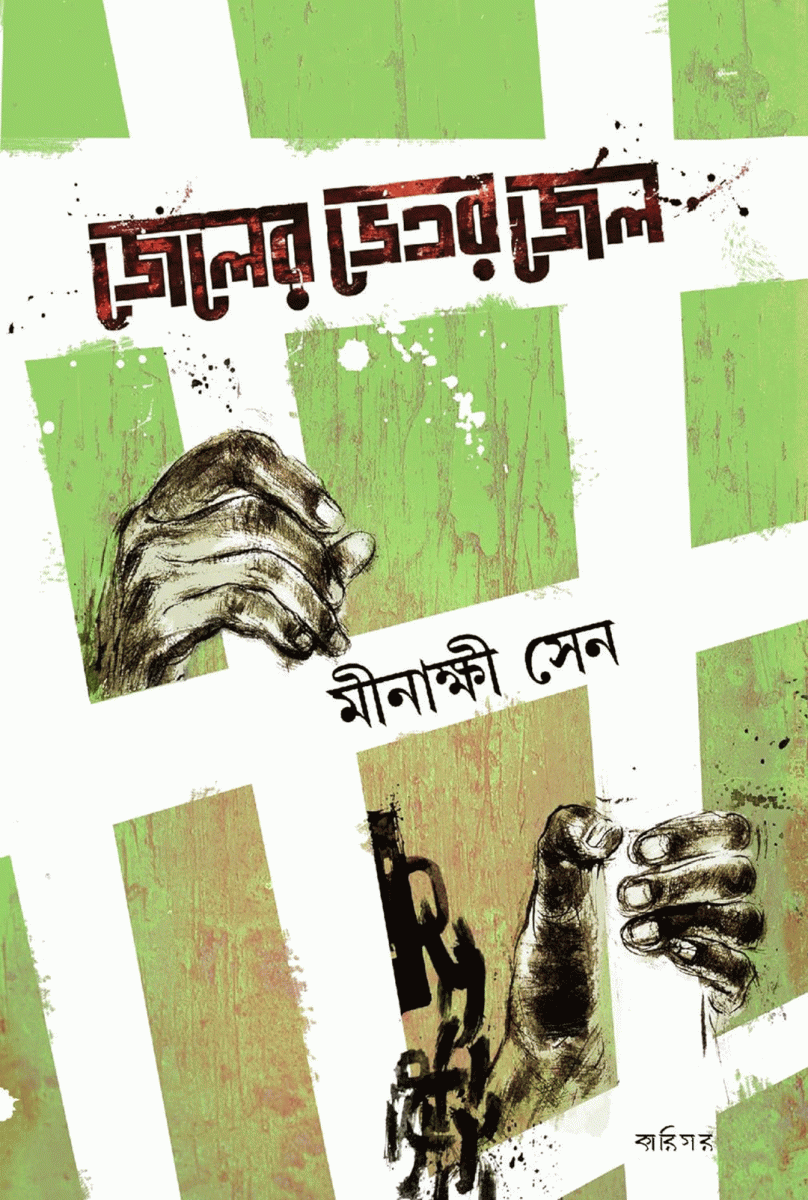
Sen asks rhetorically: ‘Why didn’t you tell the judge your whole story? The judge would have legally sent you back to your family.’ Champa had no answers. Perhaps she was unable to distinguish between the people and the institutions—the police, the court, the judge. Was this because she was unaware? Because she had no exposure to any reality outside of her life in the home and the village? Or was it because she had witnessed the nexus between these different institutional spaces? She was at the end of her sentence, yet the authorities, with all the knowledge and understanding of her case, had made no arrangements for a safe life for her beyond the prison. Was this not a valid question for the court? Why did she choose to set fire to herself?
– Extract from Chapter 3 of Narratives of Confinement, Harm and Resistance, Mahuya Bandyopadhyay
RM: I think that it’s these elements of surveillance, social control and confinement, which run through that continuum for women. So whether it’s growing up as a young girl in the space of a home—the kind of surveillance, control and confinement that they experience, which then follows them through the different institutions. So, even if they go to the police to speak about domestic violence or get some kind of support, it’s that same cycle that keeps repeating.
Generally, a separation is made between the ordinary prisoner and the political prisoner but I think, essentially, all of them are political prisoners. My work is with foreign nationals, specifically the Bangladeshi women in prison, who are seen as violating the borders of the state. They would also be political prisoners. But women prisoners who are Indian citizens, they too are violating or resisting certain norms of the state, the family, and the community. So in that sense, we can look at all of them as political prisoners.
It’s a tough balance to strike when we write about women—documenting how women subvert systems in the everyday, but without falling into the valorisation paradigm. Women, Incarcerated does strike that balance. Could you talk a little bit more about how you did that?
MB: I think that a focus on the everyday really helps to do that because it’s the ‘mundane’. So there is no valour as the mundane is not valorised at all: it’s really about what they are doing in their everyday. What sorts of connections are they making? How are they making these connections? For example, one story that came up was that when one of the women had to go for interrogation, all the other women would give her their petticoats to wear. [Thus] she was actually layering herself with three of their petticoats, so that [the beating] hurt a little bit less.
But if one thinks that documenting this is a kind of, I don’t know, exoticisation or the valorisation of resistance, I think we’re okay with that. Because these narratives need to be out, and need to be told that resistance is actually in these little acts.
You know, it’s a well-known idea when we speak of confinement: what are you breaking [via confinement]? And, for these prisoners, it was very clear that what they were breaking [via the physical torture] is the spirit. You want to break the body in order to break the spirit. And political prisoners would tell you again and again that they couldn’t break our spirit. And that’s because of these solidarities. And the solidarities may be imagined solidarities, or the solidarities of the movement, or the solidarity of being part of a collective, but, far more than that, the solidarities which were being expressed were in their “here” and “now”, in prison by these women prisoners.
But it needs to be noted that the solidarities are irregular. You don't know when they will happen. They’re very unpredictable. But, they’re magic.
They’re magical because suddenly there will be something which will just transport you from the confines of that prison to another world, to something which is beautiful and sensitive.
Court visits were one of the most anticipated events for most women prisoners on remand. On the one hand, it evoked hopes for their release; on the other, it also opened up possibilities for meeting men. In fact, eight of the fourteen women I interviewed found their romantic partners during their court visits in the bakshi khana (lock-up). These visits were treated like celebratory affairs in the prison and involved a range of preparations beforehand. For instance, many women would stitch new clothes in the prison factory days before their scheduled court date, or would borrow clothes from the female guards by paying them money. Others would spend the previous night applying henna to their hands, plucking their eyebrows, or getting facials done from their fellow prisoners.
– Extract from Chapter 5 of The Many Tales of ‘Love’: Prison, Survival & Resistance, Kanupriya Sharma
RM: And, because of this, we have absolutely every reason to highlight resistance, and we need to do it as much as we can, because it first shows us the structure, it shows us the cracks in the structure (which are otherwise well hidden), it shows us what people are resisting against, but it also shows us the impact of the structure on them.
And I think building solidarities is actually an act of resistance in prison because the way you are confined, you are expected to be isolated. You’re not supposed to build those solidarities because it’s a threat to the institution as well.
For instance, in the case of the Bangladeshi women, it was that extra piece of fish. If one woman needs that extra piece of fish there would be 10 other women who would support that one woman for that extra piece of fish. So, the solidarities also tell us what they are fighting against and what they are up against in an institutional space like that.
But, like Mahuya said, it’s contingent. There would be another time when they cannot come together for an extra piece of soap because it’s only that one woman who can get it. So, it’s that constant churning that keeps happening in terms of access to resources, and the individual versus the collective in the prison.
This is so moving what you’re sharing because it’s like you went looking for violence, but you found love. Your book has a constructive bias towards women’s lives as opposed to a deconstructive bias. Is it because of who you both are as people or is it, literally, that’s what you found?
RM: I can respond to the first bit about looking for violence and finding love. My argument has always been, and I’ve written and spoken about it elsewhere, that we do find an extension of ourselves in the field.
So, while we are going to understand the experiences of other people, the frameworks and the lens that we look through are also shaped by our own experiences and our worldviews. But I do think it’s also about training, and having that reflexive kind of approach where you have to be open to the fact that you go in looking for something, which may be challenged. You have to be open to being critiqued and questioned, not just by a group of academics, but also the people whom you’re going to interview. You have to expose yourself in the field…
MB: This question of looking for violence and finding love, it’s also about how you say it. We find love, but the love tells the story of the violence. So, I know our work has been critiqued for not talking about dehumanisation [of persons in prisons] because we are talking a lot more about resistance.
But, I feel that what we’re trying to say is that you have dehumanisation and violence as a backdrop, and against that, we present these stories of resistance, love and camaraderie, and those stories, in fact, tell us about the extent of the dehumanisation. Where have you been put and what is that experience that leads to these kinds of experiences of solidarities?
Going back to Champarani’s narrative, you talk of this sense of foreboding that she has at every juncture, which is tied to having implicit knowledge of the continuum between society, state and prison. How does one take cognisance of this implicit knowledge women carry?
MB: I think it’s more about how does one access this implicit knowledge? It’s difficult to access this knowledge. One is the access to the institution [of the prison] itself. But second is, what are people going to tell you? And how are they going to tell you? And what is it that you will get out of it? In most cases, you begin by this difficulty of people thinking, “What do we say? It’s like stating the obvious.”
But it’s in the stating of the obvious, and moving through that to arrive at what is implicit, the continuities we spoke of emerge; the continuities are not explicit.
So, how does one look at this implicit knowledge?
This implicit knowledge could be in the way that one exercises one’s freedom, independence, autonomy within the institution, which invariably means that there will be some amount of violence, some amount of restriction. For instance, if there is an argument, you might hear a woman prisoner say, “This is what happens all the time with me, and I’m going to, you know, I’m not going to take it anymore, and I’m going to put my foot down.” So, you see how the response is not connected to the here and now, but it’s connected to the past, and a certain articulation and insight may emerge from that.
I think the book is valuable also because, somewhere, we are trying to really mine and unearth those continuities through the narratives of women prisoners because it’s not given to you on a plate.
What does this idea of embodied and implicit knowledge open up, which, let’s say, other research methodologies don’t?
RM: Just yesterday, I was speaking with someone and they emphasised the importance of statistics and numbers and what that can bring to policy change. But I think my argument here is that the emotions that any of these stories generate are what go across to the readers. We have so many numbers available, whether [they’re for] gender-based violence, or poverty or forced migration. They’re all available. But, even if you just take the example of India, changes in law and policy have happened because of that one story, one incident, and one narrative. So, from that point of view, it’s really important to understand the embodied experiences of these women. And the idea is to evoke emotion and to share that pain that some of these women experience inside and outside. And that’s also in the style of writing—trying to evoke that sentiment in the reader, “Let’s understand through pain,” and how that politics of pain can generate social change. For instance, my chapter in the book looks at it in terms of time.
How do some of these women experience time as they go from one country to another, one institution to another, and then in the prison itself?

What would you say are some of the future-forward imaginings of prison systems, whether it’s reformist or abolitionist view? What should people think about or engage with in the current moment?
RM: If you’re talking about an imaginary, then it has to be a world without prisons and a world without borders because they’re all linked in the way they are constructed. That is what we should aspire to do. And the aspiration is also that we don’t have to publish [such] books anymore, that these circumstances and these conditions of survival don’t exist. But at the moment, we have to work with and within the system with that aspiration. We’re not abolishing prisons tomorrow. So, I guess that ties in with the way we developed the book as well; the authors of the essays range from some people in the system, some activists, researchers, and social work practitioners. They’re all doing things in different capacities.
MB: Yes. I think I agree, but I also feel that the abolitionist sort of imaginary is something that is an imposed imaginary because it’s being imagined elsewhere. And we are now accepting it or imagining it in the same way. So, in India, for instance, I don’t think we are yet ready to even begin to accept that as an imaginary because we don’t even have access [to the prison].
There is a lot of work that is going on in the UK prison system. It is collaborative work where there are prison officials, prisoners and researchers who are writing together, who are accessing the prison together, who are working in prisons, and in India, the access is still impossible. Now, in India, we have a rule that you have to pay one lakh rupees to actually be able to access a prison for research. So, I feel that a collective imagination becomes very difficult. So, for me, right now, I think the imagination for the prison is really more access and how can the prison be opened up so that civil society can intervene. Civil society can do the job of at least making the state accountable and responsible for what’s going on there. We found it easier to access some of these safety homes and observation homes for boys and girls. I did fieldwork 30 years ago in prisons. And, I’m going into another space of confinement now and nothing has changed. And if anything has changed, it’s in the domain of more surveillance and more control and so on.
RM: I think that the prison and the movement against prisons or incarceration also has to be seen in conjunction with all the other social movements.
We can’t keep looking at prison in isolation because who actually ends up going to prison? It’s the most marginalised and the most disenfranchised.
So, to constantly bring the prison back into all of these discussions, I feel, is really important. That’s why the abolition argument is linked with race and that the most incarcerated people in the US are Black people. In our case, if you look at the statistics, it is the Scheduled Caste/Scheduled Tribe/Other Backward Classes people who are in prison in large numbers: it’s 67 per cent. So, whom is this prison serving? And that, for me, is the imagination of bringing these collective movements together to look at the prison. We need to start from there: looking at the prison. That’s where a whole population is kept hidden from public view.
Drawing from what you said about the exceptionalisation of the category of the “political prisoner”, at an ideological level, how can a feminist movement or the Indian women’s autonomous movement imagine abolition?
RM: Even at the book launch, there was a disagreement whether we need prisons or we don’t need prisons. So, I think the [women’s] movement has two perspectives on this. I don’t think that for the longest time, the women’s movement actually thought about prisons, or who ends up being in prison. Since I started working, I have just been trying to understand who ends up going to prison when we implement a criminal law. There are so many women who end up going to prison when those laws are implemented. I don’t think that the reformation vs. abolition debate is still as strong within the women’s movement as it should be. There is a strong lobby which feels that we still need prisons and we need laws which criminalise. And, I think there’s a very, very small and minuscule group of people who think that we need to go beyond that because ultimately, it’s a lot of women and a lot of people who belong to marginal identities, who end up going to prison.
MB: But, I think we’re very far away from even beginning those discussions because the issues of exclusions such as those of caste, marginal gender identities, disability, etc., and how these intersect with the feminist perspectives and the movement needs a lot more discussion.
In the context of the prison too, we need more research, more understanding on how these exclusions play out, other than the obvious understanding of over-representation of certain categories of people in prison.
And for that, again, we need to enable prison research through opening up the prison, ensuring support for researchers and enabling connections between different kinds of professionals and workers who are interested in understanding the prison.
RM: I just want to put a caveat for the abolition argument because I think it’s mostly understood as normlessness. But, the abolition argument comes with an imagination, one of a more just and equitable society, where the principles of organisation of that society are looked at differently from the present ideas of sovereignty and security. This is because the way the state is constructed through the ideas of sovereignty and security is increasingly based on creating a threatening other. That other person can be a non-citizen. The other person can be the lowest in the hierarchy of citizenship. And we see how that’s working out in India at the moment. And the argument is always security. There is you [and to keep you safe] everyone else needs to be in prison. So, the idea of abolition really comes from an imagination where we look at society and collectively imagine a different kind of order from the bordered orders that are created at the moment. We must look at a different order for ourselves.
Read in Hindi.



